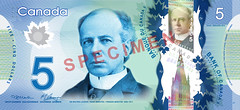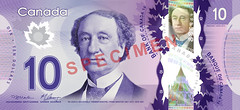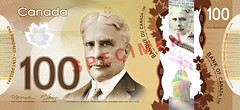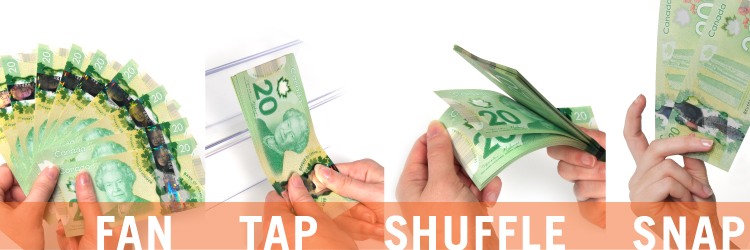A Canadian dollar is made up of 100 Canadian cents, and Canadians deal with their dollars and cents using a variety of metal coins and paper bills.

The Toonie or Twoonie is the distinctive-looking two dollar coin made of two different colours of metal. It replaced the old two dollar bill in the mid-nineties. It’s got a polar bear on it.
The Loonie is the one dollar coin, made of gold-coloured nickel. There used to be a one dollar bill, but it was phased out in the 1980s. It’s called a “Loonie” because it has a picture of a loon, the national bird of Canada, on one side.
The Quarter is the silver-coloured 25 cent piece. Four of them and you’ve got a dollar! It has a caribou, one of Canada’s beloved antlered animals.
The Dime is the 10 cent piece. It has a sailboat on it, the famous Bluenose schooner that was the fastest racing ship in the world for almost 20 years.
The Nickel is the five cent piece. It’s bigger than the dime! And it’s actually made of steel, not nickel! What’s that about? It has a beaver.
The penny has now been discontinued, though you may see one from time to time. If you pay for something in a store with a credit or debit card, you will be charged and pay the actual price. If you pay with cash, the price will be rounded either up or down to the nearest 5 cents so that no pennies are needed.

(from www.mint.ca)
Canadian dollar bills have all been recently redesigned and made of a polymer.





Here are some handy tips on handing the polymer notes from the Bank of Canada:

- When counting, hold the notes in one hand and use your thumb to push the top bill into your other hand.
- Wipe soiled notes with a damp cloth.
- Dry wet notes with a towel.
- Repair torn notes with tape and use them again. They will be removed from circulation when they are returned to the Bank of Canada.







